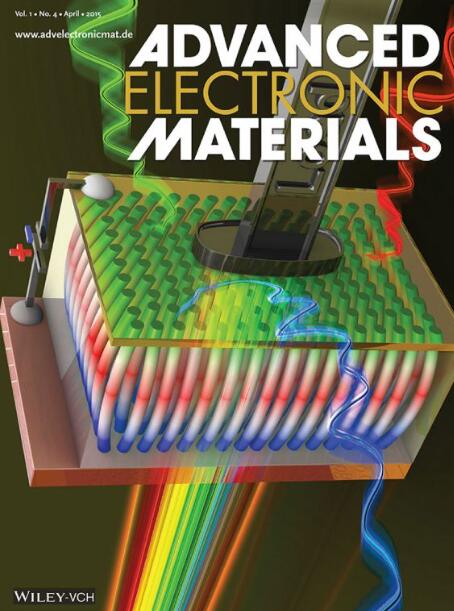聚焦于单通道截面的微通道板的固定模式噪声机理
IF 5.3
2区 材料科学
Q2 MATERIALS SCIENCE, MULTIDISCIPLINARY
引用次数: 0
摘要
MCP的固定模式噪声(FPN)显著影响检测图像的分辨率和清晰度。本文主要研究单通道的横截面,以阐明FPN的形成机制。通过对圆形MCP试样的微观观察得到了其截面,并测量了FPN。圆形和缺陷截面,以及正多边形和矩形截面的建模。提出了通过截面中心的最短距离作为表征长径比(L/D)的指标。模拟了输出端倍增电子的增益、逃逸动力学和荧光屏上的电子束光斑形状。结果表明,缺陷圆的横截面积相等。随着偏置电压的增加,电子增益增加。圆度越大,通过截面中心的距离越短,发射电子束的增益和扩散角越高。MCP输出端的电子发射轨迹和荧光屏上的光束光斑形状随截面的变化而变化。多光纤中边界微孔的变形使增益降低,产生暗网格固定图案噪声。当偏置电压升高时,边界微孔的L/D增大增益,导致亮栅固定模式噪声。本文章由计算机程序翻译,如有差异,请以英文原文为准。

Mechanism of Fixed Pattern Noise of Micro-Channel Plate Focusing on Cross-Section of Single Channel
Fixed Pattern Noise (FPN) of MCP significantly influences resolution and clarity of detected images. This investigation focuses on the cross-section of single channel to clarify the formation mechanism of FPN. The cross-section is obtained by microscopic observation of circular MCP samples, and the FPN is measured. Circular and defective cross-sections, as well as regular polygonal and rectangular cross-sections are modeled. The shortest distance through the center of the cross-section is proposed as an index to characterize length-to-diameter ratio(L/D). The gain, escape dynamics of multiplied electrons from the output end and electron beam spot shape on phosphor screen are simulated. Results indicate that defective circulars are equal in cross-sectional area. As the bias voltage increases, the electron gain increases. The higher the roundness and the shortest distance through the center of cross-section, the higher the gain and the spreading angle of emitted electron beam. The electron emission trajectory at the output end of MCP and beam spot shape on phosphor screen varies with the cross-section. Deformation of boundary micropores in the multi-fiber decreases gain, resulting in dark-grid fixed pattern noise. With higher bias voltage, the L/D of boundary micropores increases gain, leading to bright-grid fixed pattern noise.
求助全文
通过发布文献求助,成功后即可免费获取论文全文。
去求助
来源期刊

Advanced Electronic Materials
NANOSCIENCE & NANOTECHNOLOGYMATERIALS SCIE-MATERIALS SCIENCE, MULTIDISCIPLINARY
CiteScore
11.00
自引率
3.20%
发文量
433
期刊介绍:
Advanced Electronic Materials is an interdisciplinary forum for peer-reviewed, high-quality, high-impact research in the fields of materials science, physics, and engineering of electronic and magnetic materials. It includes research on physics and physical properties of electronic and magnetic materials, spintronics, electronics, device physics and engineering, micro- and nano-electromechanical systems, and organic electronics, in addition to fundamental research.
 求助内容:
求助内容: 应助结果提醒方式:
应助结果提醒方式:


